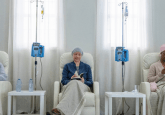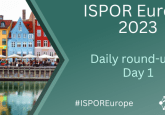Target trial emulation in HTA RWD submissions: methodological evolution or industry revolution?

In the rapidly evolving landscape of health technology assessment (HTA), decision-makers are looking to real-world data (RWD) to generate real-world evidence (RWE) on the effectiveness, safety, and cost-effectiveness of health technologies. Methodologies, such as target trial emulation (TTE), have emerged to address challenges such as confounding and selection bias that often afflict observational studies to enable causal inferences to be made. As the application of TTE in RWE generation gains traction, HTA agencies have begun endorsing its utilization; however, the widespread adoption of TTE by industry remains elusive. This raises a critical question: is the TTE framework ready to be embraced, or has it highlighted industry lack of expertise to adopt this innovative approach?
In this Guest Column, Sreeram Ramagopalan (Payer Evidence and Market Access Strategy Lead, Lane Clark & Peacock LLP [LCP]), Alejandra Castanon (Senior Epidemiologist, LCP), Stephen Duffield (Associate Director – Real-world evidence methods, National Institute for Health and Care Excellence [NICE]) and Rob Reynolds (Vice President, Global Epidemiology, GSK) provide a multistakeholder perspective of TTE in the context of RWD submissions for HTA, exploring the expectations set by HTA agencies and providing insights into the implementation challenges encountered by the pharmaceutical industry. This column is based on the session ‘Target Trial Emulation in HTA RWD Submissions: A Best Practice Not Embraced – Methodological Challenge or Manufacturers’ Reluctance?’ presented at ISPOR 2024.
The authors have also recently published an Editorial on this subject in the Journal of Comparative Effectiveness Research.

Target trial emulation – the application of design principles from randomized trials to the analysis of observational data
“Given the plethora of analytical approaches that could be taken when analyzing RWD, HTA agencies have recently advocated for TTE because it is a pragmatic approach to leveraging observational data when a randomized controlled trial (RCT) is not feasible.” Alejandra Castanon, LCP, ISPOR 2024
Introduced by Miguel Hernán (Harvard School of Public Heath, USA) in 2016, TTE is an evolution within comparative effectiveness research, with the concept of trial emulation, particularly in the context of decision-making, originally proposed in 2011. In observational analyses, TTE serves as a valuable methodological tool, helping to mitigate key types of bias such as immortal time bias and selection bias and improving transparency and replicability of study design. Moreover, TTE provides a practical approach to leveraging observational data by helping with study design choices and defining key parameters when conducting an RCT is impractical. However, notably TTE is not a ‘panacea;’ it cannot completely eliminate confounding bias or compensate for missing or unsuitable data. Nonetheless, TTE remains an effective framework to address causal questions.
“…to use healthcare databases for comparative effectiveness research that is directly relevant to decision-making, frame your question as one that would be answered by a randomized trial, and then tell us how you emulated such trial in the observational data.” Miguel Hernán, Harvard School of Public Heath, Epidemiology, May 2011
Cornerstone of RWD study design – the NICE example
A recent publication highlighted approximately 200 observational studies employing TTE to address bias, signaling a growing interest within academia to explore its potential. Likewise, in the past 2–3 years, several HTA bodies, including NICE, Haute Autorité de Santé (HAS) and Canadian Agency for Drugs and Technologies in Health (CADTH, now Canada’s Drug Agency), have endorsed TTE for healthcare decision-making to provide rigorous analyses of observational data when RCT data is unavailable or insufficient due to feasibility, ethical or time constraints.
“We like the target trial approach for two main reasons. Firstly, it really fits well with the kinds of comparative treatment effect studies that we tend to see at NICE… The second reason is that it’s highly intuitive. To be able to convince NICE decision-making committees, you have to speak their language and we believe that’s what the TTE framework does. Our committees are very aware of the strength of RCTs so to be able to explain to them the ways in which RWE emulates those aspects is really helpful.” Stephen Duffield, NICE, ISPOR 2024

At NICE in particular, TTE is a cornerstone of the ‘Real-World Evidence Framework’ released in 2022, exemplifying robust study design for causal treatment effect questions by addressing common biases in RWE studies while promoting transparency. NICE is also contributing to the use of TTE with demonstration projects and collaborations including one aimed at exploring how RWE can inform its clinical practice guidelines.
A framework yet to be embraced in HTA decision-making?
Despite such clear guidance from HTA bodies like NICE, utilization of TTE by industry is yet to be fully adopted. A review by NICE of evidence submissions to the agency has revealed no appraisals to date have explicitly used the TTE framework, although elements of the target trial approach have been incorporated in selected examples. Whilst a recent systematic review highlighted an increase in the number of publications including TTE, the analysis also revealed that 57% of the studies explicitly using TTE failed to describe or report their target trial specifications. Without being fully explicit in the use of TTE, many advantages of TTE to enable decision-making remain untapped.
Lessons learned in regulatory decision-making – only fools rush in?
Although TTE has seen limited adoption so far in HTA decision-making, TTE has been explored through several regulatory demonstration projects and use cases. Both the FDA and EMA have recognized their use and have been explicit about the value of TTE. The framework can, as an example, be utilized to combine RWD with a single-arm clinical trial (with RWD acting as an external control). Additionally, TTE has been investigated for its potential to support post-approval effectiveness studies, offering insights into comparative treatment approaches in real-world clinical practice.
Other frameworks also offer structured best practices for the design and execution of RWD studies, including SPIFD2, which provides a detailed, principled process for study design and data selection, enhancing usability and transparency. Applying TTE effectively also requires a deep understanding of its principles – a key point emphasized during the ISPOR 2024 session where audience polling indicated ‘not enough expertise’ as the main barrier to conducting TTE studies. Furthermore, TTE alone cannot resolve data quality issues that concern HTA bodies and regulators; therefore, it should be integrated with other robust observational study practices to ensure comprehensive and reliable analyses.
“Many working in the field are wondering what value does TTE really have? Many see TTE as an extra burden – an extra step. But through examples, it’s clear it can really help study design. That extra work up front is going to pay off in the end in terms of generating credible, valid RWE, assuming that the right data and execution is used.” Rob Reynolds, GSK, ISPOR 2024

Strategies to embrace TTE in HTA RWD submissions
Efforts are underway to enhance TTE’s application by providing practical guidance on conducting and analyzing studies employing this approach. The PRINCIPLED guide outlines a systematic, five-step process for study design and data analysis in non-interventional studies. Additionally, the forthcoming TrAnsparent ReportinG of observational studies Emulating a Target trial (TARGET) guideline will offer comprehensive recommendations for reporting TTE studies transparently. To overcome barriers and reduce hesitancy in using TTE for decision-making, particularly in HTA RWD submissions, collaboration among stakeholders (regulators, HTA agencies, industry and academia) is crucial. Given the audience polling of ‘lack of expertise’ being a key barrier, future training sessions at venues such as ISPOR are warranted.

Authors

Sreeram Ramagopalan is a Partner at LCP, with more than 15 years’ experience in strategically planning and utilizing routinely collected data for HTA to obtain and maintain reimbursement of medicines. He is an international expert in RWE with over 320 journal publications, with roles as an academic editor for the journal PLoS One, on the editorial board for the journal BMC Medicine, an IFAPP Global Fellow in Medicines Development and a Visiting Senior Lecturer at the Centre for Pharmaceutical Medicine Research, King’s College London.

Alejandra Castanon is a Senior Epidemiologist at LCP and a medical doctor and epidemiologist by background. Her area of expertise is in the design and execution of RWD studies. Alejandra has a PhD in Cancer Epidemiology and is an author on more than 35 peer-reviewed publications.

Stephen Duffield is Associate Director of Real-world methods at NICE. His role involves the continuing development of NICE’s RWE framework, collaboration on RWE demonstration projects, and helping to transform NICE’s use of RWD across guidance products. He is also involved with upskilling individuals within and externally to the organization, contributing to training workshops and technical forums. Stephen has a degree in medicine and a PhD in public health. Previously, he worked as a clinical doctor and a guideline developer in NICE Centre for Guidelines.

Rob Reynolds is Vice President & Head, Global Epidemiology at GSK. He leads a group of epidemiologists responsible for providing epidemiology and RWE in support of research and clinical development in addition to post-approval regulatory submissions. He is also an Adjunct Associate Professor of Epidemiology at Tulane School of Public Health and Tropical Medicine. Prior to joining GSK, Rob was at Pfizer for 20 years, most recently leading Regulatory and Safety Epidemiology. He holds an AB in Biology from Bard College and a MSc in Epidemiology and ScD in Population and International Health from the Harvard TH Chan School of Public Health. He is a Fellow and former Board member of the International Society for Pharmacoepidemiology. He has participated in multiple international, comparative studies and has published in the areas of pharmacoepidemiologic methods, medicine safety and effectiveness, and women’s health.
Acknowledgments
Writing assistance, provided by Jo Walker of The Evidence Base, was used in an earlier version of this column.







